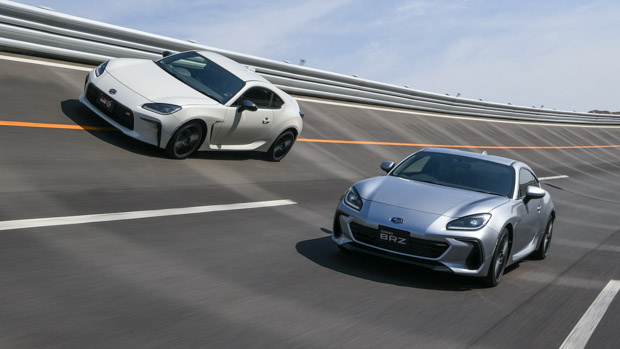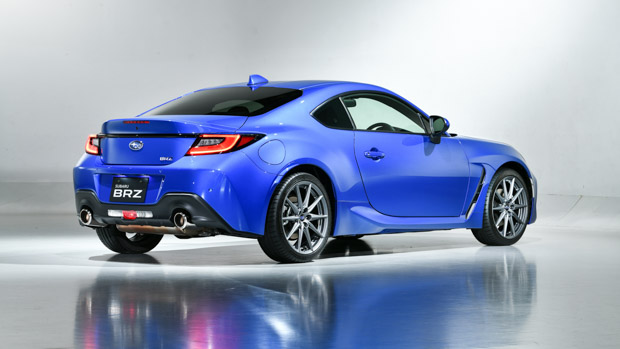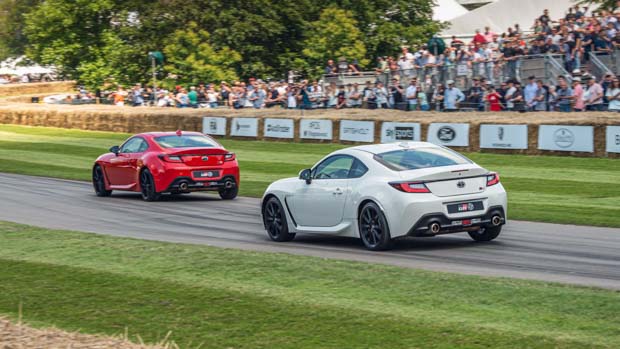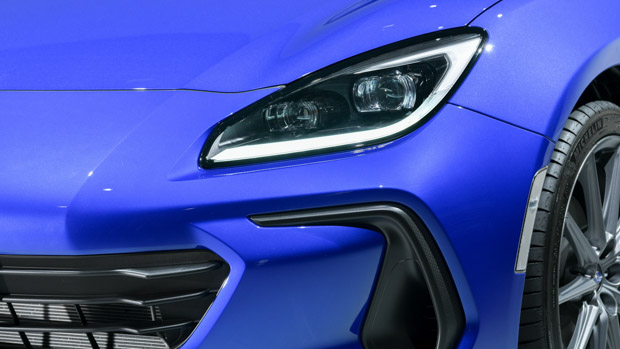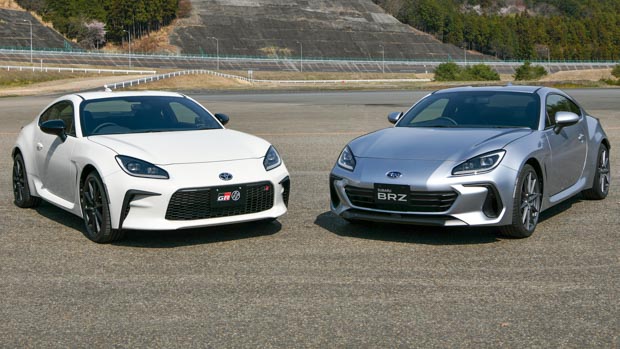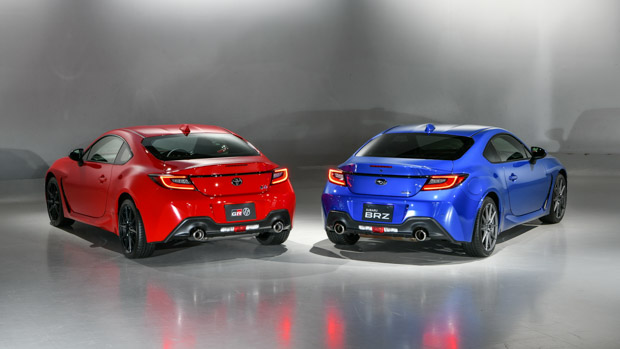-
Car Reviews
- All reviews
- Midsize SUVs
- Small cars
- Utes
- Small SUVs
- Large SUVs
- Large cars
- Sports SUVs
- Sports cars
- Vans
Latest reviews
- Car News
-
Car Comparisons
Latest comparisons
- Chasing Deals
With pricing of the all new Subaru BRZ now confirmed for Australian buyers – and the local release looming for the new Toyota GR 86 – here are five differences between the two coupes.
They might share a chassis, a 173kW/250Nm 2.4-litre boxer engine and most of their aesthetics, but a close inspection reveals that a number of key differences exist between the second-generation Toyota GR 86 and Subaru BRZ twins.
The two Japanese manufacturers have collaborated closely on the basics of these two rear-wheel-drive, normally aspirated coupes – but these twins are fraternal and not identical.
Now that pricing has been released in Australia for the 2022 Subaru BRZ, and Toyota is expected to announce an Australian release date for the GR 86 imminently, let’s check out five key differences between the Subaru BRZ and the Toyota 86.
First of all, and the biggest for me is that BRZ features an updated suspension package featuring more aluminium components to reduce unsprung weight. Comparatively, the GR 86 retains similar steel-based components found in the previous generation platform.
BRZ also introduces a new rear sway-bar mounting system, moving the pickup location to the body of the car instead of the subframe mounted design featured in the outgoing 86/BRZ twins.
In the American market, Toyota is offering a lower trim level for GR86 featuring 17×7.5 inch wheels with the same Michelin Primacy HP tyres available on the previous gen cars. Base model cars also come in 9.98kg lighter than GR premium/BRZ models.
By contrast, Subaru has confirmed that it will not offer a more affordable base model to match the GR 86. Instead, the more aggressive 18-inch wheel package and Michelin Pilot Sport 4S tyres are standard on the Subaru BRZ for Australia.
The BRZ commences at $38,990 plus on-road costs in standard high-spec trim for Australia, while heated leather/alcantara seats add a further $1,200.
Should Toyota Australia follow their American counterparts in selling a more spartan version of the GR 86 in our market, expect it to be priced closer to $35,000 (plus ORCs).
Moving outside there are subtle differences in headlight design. Whilst the headlights on both cars appear very similar on the surface, Subaru have worked in a slight difference in the DRL (Daytime Running Light) featuring a very familiar “C” shape to the DRL.
The differing Subaru design pays homage to the outgoing first-generation BRZ and other current Subaru products, but the subtle change means that the front end of the BRZ looks remarkably different to that of the GR 86.
Differences to the front end don’t stop there with the GR 86 having a visually larger front grille opening, perhaps a key difference for owners who intend on fitting an aftermarket turbo system and intercooler.
Whilst that is an extreme example, the larger grille opening could also be key for air flow and cooling between the enthusiast community who will undoubtedly be taking their GR 86 or BRZ on track. It would appear that the BRZ redeems itself here with larger corner vents than the GR 86 for brake cooling and aerodynamics.
The rear end remains largely the same across both cars however the higher-spec version of the GR 86 gets a duckbill rear spoiler as standard aiding the overall aerodynamic package, resulting in a relatively slippery coefficient of drag of 0.276.
There is no spoiler as standard on either trim in the BRZ but there is a full suite of aftermarket STI accessories available during the order process including a styling pack coming in at $3,798.
Latest news
About Chasing cars
Chasing Cars reviews are 100% independent.
Because we are powered by Budget Direct Insurance, we don’t receive advertising or sales revenue from car manufacturers.
We’re truly independent – giving you Australia’s best car reviews.
